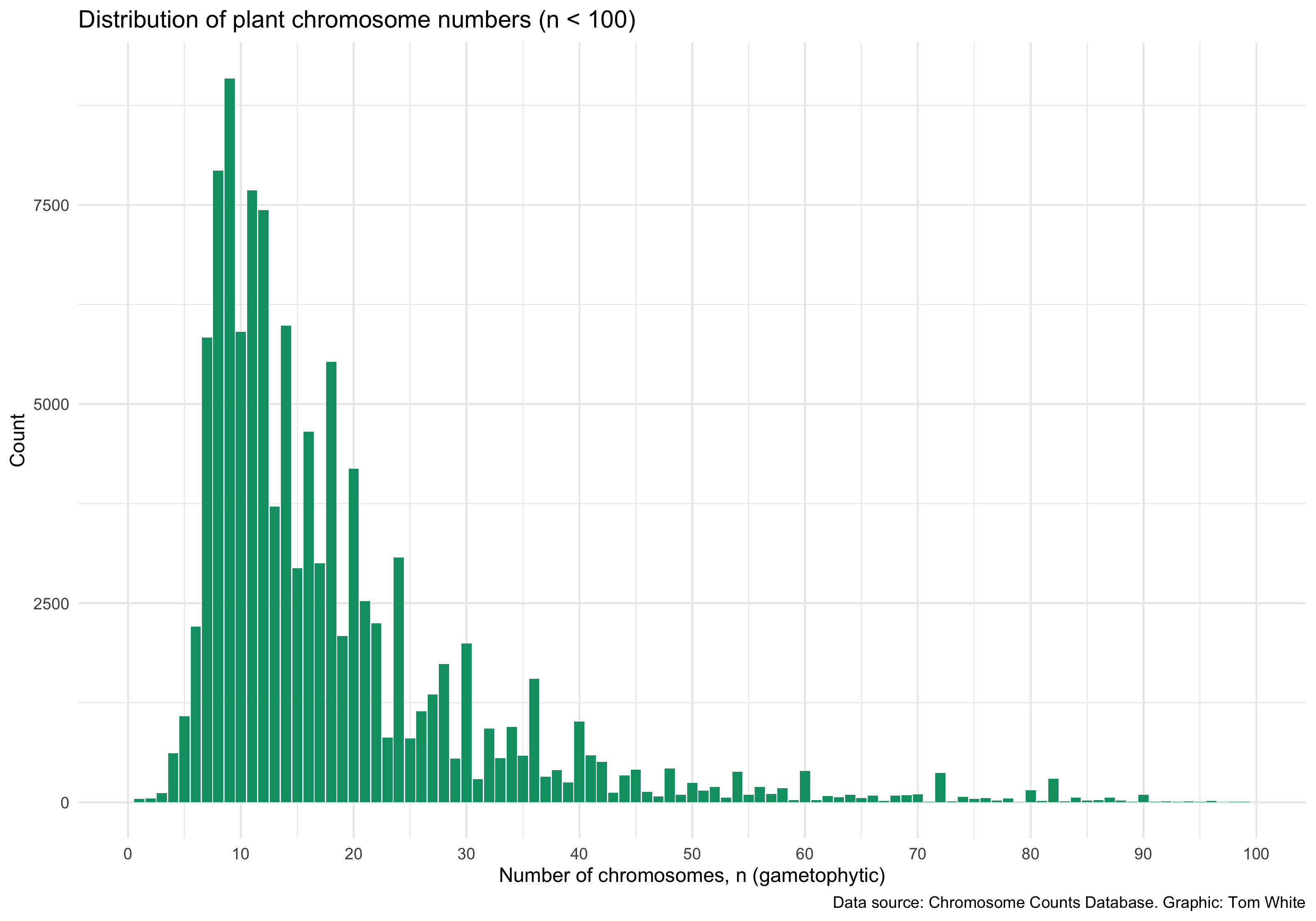41. Plant chromosome numbers
The number of chromosomes in living organisms shows a large degree of variation. Humans have 23 pairs of chromosomes, while mosquitoes have only 3 pairs. Thale cress (Arabidopsis thaliana) has 5 pairs, while black mulberry (Morus nigra) has a whopping 154 pairs!
This week’s visualization shows the number of chromosomes for plant species in the Chromosome Counts Database:

As you can see, 9 pairs of chromosomes is most common, but the distribution has a long tail (and has been cut off beyond 100 pairs).
The number shown (n) is the number of chromosomes in the gametophyte, which is the sexual phase in the life cycle of plants. A sporophyte has two sets of chromosomes: one from each parent, which is double the numbers shown in the chart (2n).
(Complicating matters further, and not shown in the diagram, is the fact that some plants are polyploid, meaning there are more than two paired copies of each chromosome. Kiwifruit, for example, are hexaploid, with six sets of chromosomes!)
Update: a week after writing this post, the following paper was published: Animal chromosome counts reveal similar range of chromosome numbers but with less polyploidy in animals compared to flowering plants by Román-Palacios et al. Figure 1 from the paper is interesting, since it shows that animals and angiosperms have similar chromosome number distributions, but ferns tend to have higher numbers of chromosomes.
Visualization type: bar chart
Data source: Chromosome Counts Database, CSV, 15 MB.
Technical notes: generated using ggplot2; code
See also: 5. Genome size; List of organisms by chromosome count, Wikipedia